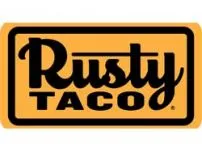Summary
Taco concepts ride on the U.S. Mexican/Tex-Mex wave — a market of about $100–105B in 2025. What really moves unit economics is rent (U.S. avg ~$24.9/sf/yr, busy corridors 2–3×), labor (counter/line staff ≈$15/hr), and utilities (commercial power ≈9–30¢/kWh by state). Add volatile inputs like beef, chicken, tortillas, and avocados plus delivery commissions of 15–30% — and you must model state by state.
Taco is one of the strongest entry points into U.S. foodservice right now: it’s familiar, it’s customizable, it’s delivery-friendly, and it can be positioned anywhere from value street food to premium “chef-y” tacos. Unlike some other food categories, tacos let you sell in multiple dayparts — lunch, afternoon, late evening — and to multiple audiences (office, students, families, tourists). For franchising this is gold: the menu is built around a short list of components (proteins, tortillas, salsas, veg, toppings) and the line can be standardized for speed. That makes training faster than a full kitchen and makes multi-unit rollouts realistic.
At the same time, tacos sit inside a very large, very visible category. Mexican restaurants in the U.S. are running at roughly $100+ billion in 2025 according to industry tracking, and big players (fast casual, QSR, Tex-Mex) keep taking share. That’s why the content for this category has to show not only “what a taco franchise is,” but also what the real cost drivers are in 2025.
Cost environment you should surface
- Rent. CBRE’s 2025 retail figures keep the U.S. average asking rent around $24.9 per sq ft per year. But taco concepts rarely want the average; they want traffic — near grocery, near big-box, near suburban crossroads, near office clusters, or on tourist strips. Those locations can be $40–80+/sf/yr, and high-street pockets go above that. So two rent scenarios are mandatory: “suburban/strip inline” vs “high-traffic/urban/tourism.”
- Labor. BLS still shows food and beverage service workers in the $14–15/hr band nationally in 2025, but coastal states, cities with their own minimums, and California/Washington will push that to the high teens. If the taco brand is structured like a fast-food restaurant and falls under state fast-food floors (like $20/hr in CA for large chains), you model that separately.
- Utilities. EIA’s 2025 tables show commercial power around the low teens on average, but the real spread is big: ≈9–12¢/kWh in low-cost states, ≈20–30+¢/kWh in California, New England and Hawaii. Tacos are not as power-hungry as a big casual-dining kitchen, but hoods, hot line, cold storage and HVAC still make this line visible.
- Ingredients. Tacos are exposed to beef, chicken, pork, tortillas/corn/wheat, cheese, tomatoes, lettuce, and avocados. Avocados and some imported produce spike when supply from Mexico is disrupted; beef and chicken follow their own cycles. That’s why you’ll see most chains pushing mix-and-match tacos, bowls, and sides — it spreads food cost over more components.
- Delivery. The taco format is great for delivery and pickup, but the pricing is the same as in other categories: delivery tiers around 15 / 25 / 30%, pickup around 6%. The text should say straight: “delivery is a channel — it is not your whole business.”
- Sales tax. Prepared food is taxed at the local combined rate (state + city/county). In some states that’s 8–10% on every order. One short sentence is enough: “check your state/city rate before fixing price points.”
Investment and Fees
| Format / Model | Initial investment (range) | Franchise fee (range) | Ongoing fees (royalty / ad fund) |
|---|---|---|---|
| Inline taco / fast-casual (800–1,400 sq ft) | $250,000 – $650,000 | $20,000 – $40,000 | 4–6% / 1–3% |
| End-cap / drive-thru taco | $450,000 – $1,100,000 | $25,000 – $50,000 | 4–6% / 1–3% |
| Small footprint / food court / kiosk | $120,000 – $300,000 | $15,000 – $30,000 | 4–6% / 0–2% |
| Ghost / delivery-first taco kitchen | $80,000 – $220,000 | $10,000 – $25,000 | 4–6% / 0–2% |
These ranges assume normal TI, line equipment (griddle/plancha, hot/cold tables, refrigeration, venting as required), POS with online ordering, signage, opening inventory, training and working capital. Drive-thru or heavy venting pushes it to the upper band.
Cost overlay:
| Cost driver | Suburban / second-gen inline | Coastal / high-traffic / drive-thru |
|---|---|---|
| Rent | $20–28/sf/yr | $40–80+/sf/yr |
| Commercial power | 9–12¢/kWh | 20–30+¢/kWh |
| Line / FOH staff | $14–16/hr | $17–20/hr (more in CA/WA) |
| Sales tax on prepared food | 5–7% | 7–10% |
| Delivery commission | 15–30% | 15–30% |
The same $45–55k/month taco unit looks good in column 1 and much tighter in column 2, even though sales are identical.
Startup costs and ongoing fees
Startup normally covers build-out, floor/plumbing for kitchen, hot line (plancha, fryer if the concept uses it, steam/hot holding), walk-in or reach-ins, prep tables, POS, signage, opening inventory (proteins, tortillas, produce, beverages), training and working capital.
Ongoing spend includes:
- franchise royalty and marketing fund;
- labor for line, register, prep and, if used, in-house delivery;
- food and packaging (tortillas, proteins, salsas, napkins, boxes);
- occupancy (base rent, CAM, insurance, local business fees);
- utilities (use your state’s current kWh);
- delivery/app commissions.
Because tacos can run a lower average check than burgers or pizza, two levers protect margin: bundles/combos (2 tacos + side + drink) and premium fillings (shrimp, birria, barbacoa) that justify higher price points.
Popular taco franchise formats
Inline fast-casual tacos. Good for neighborhoods and suburban strips. Counter service, visible make line, fast throughput, easy to run with a small team.
Drive-thru tacos. Best for commuter corridors and suburban arterials. Higher capex, higher rent, but easily the strongest sales per labor hour if the queue is planned right.
Taco + bar / cantina. Adds alcohol, dinner and weekend traffic; also adds licensing, staff training, and sometimes a bigger kitchen.
Ghost / delivery-first tacos. Works in delivery-heavy cities. Fast to open, low capex, but you must engineer items for travel and accept the 15–30% commission reality.
Requirements & ideal franchisee profile
Franchisors typically look for enough liquid capital to cover build-out and initial working capital, the ability to follow a line-based cooking system, and decent people skills (taco shops live on line speed and friendliness). Prior restaurant experience helps but isn’t a must if there is strong training and field support. Good operators watch three things every day: tickets per hour, food cost % (especially proteins and avocados), and labor % by daypart. Multi-unit candidates should plan sourcing for key SKUs (tortillas, core proteins, packaging) and a small opening team to launch several stores in one metro.
Compliance and local rules
- Most states run on their adopted version of the FDA Food Code — expect inspections on hot-holding temps, cross-contamination (raw meats, dairy-based sauces), handwashing and cleaning schedules.
- Hiring: I-9 form is federal; some states require E-Verify for private employers.
- Alcohol (for taco + bar): licensing is state/city/county-specific and can be a big line item in quota markets — budget it early.
How to choose a taco franchise
- Format fit: inline vs drive-thru vs taco-bar.
- Ticket strategy: do they have bundles, bowls and premium fillings, or only basic tacos?
- Real-estate logic: can people actually reach the store in the lunch window?
- Supply logic: does the brand have stable sources for proteins, tortillas and avocados?
- Delivery stance: is it built-in, and what’s the recommended commission tier?
- Growth path: can you open 2–4 units in the same metro without killing AOV?
Franchise FAQ
What is the initial franchise fee?
The initial franchise fee depends on the brand and market, usually from $10,000 to $50,000.
Do you help with international expansion?
Yes, TopFranchise works with brands that are ready to expand to new countries and regions.
How can I contact the franchisor?
You can fill in the request form on the franchise page, and the brand representative will contact you.













